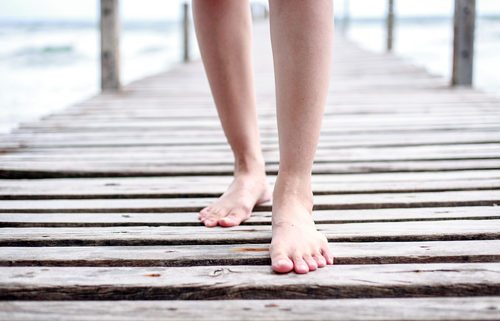Why Do You Get Varicose Veins In Your Feet?
Millions of people throughout the world struggle with varicose veins. While many assume they affect only the legs, varicose veins can be a considerable problem in your ankles and feet. This post includes basic information about varicose veins, as well discussing the symptoms of venous reflux disease, which leads to foot problems.
What are Varicose Veins?
Varicose veins are enlarged, blue or dark purple veins that bulge from the skin. Common symptoms of varicose veins include pain, discomfort, and throbbing. People can experience varicose veins throughout the body but they’re most often seen in the legs. While they can sometimes be harmless, varicose veins have been known to lead to more serious health problems, including:
- Bleeding: When the skin over the veins becomes thin, bleeding can occur. Blood loss can be a concern if left untreated.
- Sores or Skin Ulcers: Painful and difficult to heal, sores and skins ulcers are a result of chronic back-up of blood in the veins. Some sores and skin ulcers won’t heal until the vein blood flow is fixed.
- Superficial Thrombophlebitis: A blood clot that forms in a vein just below the skin is also known as superficial thrombophlebitis. Symptoms include reddened skin, tender, warm veins, and pain or swelling.
- Deep Vein Thrombosis: When a blood clot happens in a deeper vein, it is called deep vein thrombosis. Those experiencing it will feel a pulling sensation in the calf, swelling, pain, warmth, and redness. Deep vein thrombosis can have no significant symptoms. But blood clots that travel to the lungs can be fatal.
What is Venous Reflux Disease?
Venous reflux disease, also known as venous insufficiency, occurs when the saphenous vein in the leg can’t supply blood back to the heart efficiently. When that happens, blood travels to the ankles and pools there, which leads to swelling and the development of varicose veins. People who stand up while they work are more susceptible to venous reflux disease, and, therefore, varicose veins in their feet.
In some cases, chronic swollen ankles are a sign of heart failure, so it’s critical you see a physician if you suffer from them for an extended period of time.
When Should You Go To A Doctor?
If you have any of the following symptoms, consider seeing a physician:
- Sores or a rash on the leg, near the ankle, or your feet
- Skin on the calf, ankle, or foot becomes thick and changes color
- You suffer from bleeding of varicose veins
- Swollen, red, painful, warm, or tender veins
- You have a hard time doing daily activities because of chronic leg problems
- The unsightliness of varicose veins is making you feel uncomfortable
If you’re experiencing discomfort and pain in your legs and feet, don’t hesitate to get help. Swelling and varicose veins may seem like a small problem, but you might want to ensure they’re not a sign of a larger health concern.



